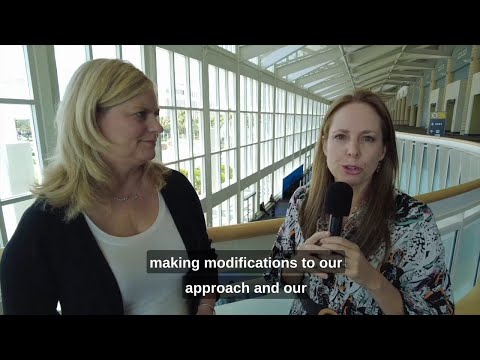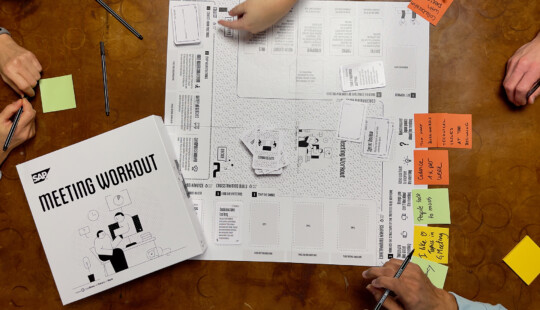Faced with ever-evolving business priorities, organizations are increasingly looking to external workers to bridge the skills gap and attain success – which means the external workforce is only expected to grow. An Economist Impact study, sponsored by SAP, found that 50% of organizations plan to increase their use of external workers, which can include independent contractors, consultants, freelancers, temps, and other outsourced labor. It’s critical, therefore, that organizations have a total workforce management strategy that integrates both employees and external workers.
Standard Chartered is a leading international bank headquartered in London with a presence in 59 markets. With over 83,000 employees and almost 14,000 external workers, implementing a total workforce management strategy was crucial for the bank to remain competitive and compliant. Guided by a workplace culture that champions innovation, technology, and sustainability, Standard Chartered supports customers from around the world to open opportunities in new markets and to live up to its brand promise to be here for good.
“For us, it’s really important to have that total workforce management view, where we’re starting to think about workforce planning and skills planning as the future of work,” said Melinda McKinley, global head, HR Strategy and Digital Transformation, Standard Chartered. McKinley shared key insights from Standard Chartered’s HR transformation at SAP Sapphire Orlando.

Due to changing regulations, the banking sector has faced an increasing demand for workers with specialized skill sets to meet IT and cybersecurity requirements. This has led many finance organizations like Standard Chartered to tap into the external workforce. Today, Standard Chartered’s external workers are integral to how the organization operates. But initially, it lacked the technology and insights to effectively manage them.
The bank had an over 20-year-old HR system that made it increasingly difficult to innovate and respond quickly to changing business and regulatory requirements, according to Steve Leighton, head of HR Digital Enablement, Standard Chartered and a member of the team undertaking the HR transformation journey since it began in 2017. “We wanted to replace that legacy system, transform, simplify, implement a global process, and really make an improvement in the experience.”
One strategic requirement stood out as key to the success of the HR transformation: “How do we join together our permanent employees and our contingent workers to get a total view of the workforce across the organization?” said Leighton, who presented the project results at SAP Sapphire Orlando. “This is a building block in our long-term ambition of being able to perform our strategic workforce planning.”
HR Transformation Wins SAP Innovation Award
Standard Chartered adopted a total workforce management strategy by integrating SAP SuccessFactors Employee Central with SAP Fieldglass solutions in the cloud to help deliver a truly holistic capability across its permanent and contingent workforce. “That kind of integration – [SAP SuccessFactors and SAP Fieldglass] together – was key for this particular transformation,” Leighton said.
With the implementation of position management, a foundational capability in SAP SuccessFactors Employee Central that helps organizations create and manage job positions to maintain a desired org structure, the organization achieved a breakthrough in its HR transformation journey as the result of its clear strategic vision.
“One of the key things that set us on a path for a future-ready workforce was really embracing the foundational architecture that position management brings,” McKinley said. “That meant immediately we had a visualization of our total workforce – our contingent and our employee base. It is leading to much stronger data-driven hiring decisions.”
Standard Chartered remediated 75 interfaces to third-party systems, including outsourced payroll solutions, and migrated 3.5 million data records from its legacy platform. It overhauled processes to achieve an 87% reduction of HR reports. With improved visibility of the entire workforce, where legally permissible, it can now capture richer data for diversity and inclusion metrics to further enable its inclusive culture.
A clear focus on employee experience has significantly contributed to the transformation’s ongoing success. Applying a “deep” experience approach, the team evaluated each phase and decision in the project for its potential impact on employee experience. Approximately 200 colleagues participated in user acceptance testing, providing valuable feedback through surveys and interviews. Collecting insights post-deployment also enabled the team to continuously innovate and improve the experience. Among the resulting innovations is a new employee portal with a modernized interface that integrates adoption nudges and chatbots to support colleagues during the hiring process.
“Position management was a key tenet of being able to facilitate this single workforce capability,” said Leighton, who shared learnings from the project, including the effort required for change management to educate and prepare stakeholders and the diligent approach to the data integration. He noted that this effort paid off by “clearly culminating in that success.”
Standard Chartered recently won an SAP Innovation Award for its success in delivering on total workforce management with a focus on experience.
Strategic Vision for Future-Ready Workforce
“With SAP, we now have a truly holistic view of our permanent and external workers,” McKinley said. “This has not only improved the employee experience and given us richer insights into our entire workforce but has also helped set the foundation for strategic corporate planning, integrated talent management, and management of regulatory requirements.”
Standard Chartered is now focused on leveraging and expanding future-ready workforce capabilities by using the SAP Analytics Cloud solution for workforce planning. McKinley described how the collaboration of the HR and finance teams is building success for the organization: “We’re working closely with our finance colleagues to bring finance and HR data together a little more seamlessly through the use of SAP Analytics Cloud, with a view to actually making a difference to bottom-up planning through our corporate plan.”
She noted, “The value that will create, by moving agreed workforce modelling into the position charts, I think will be a game changer for us in terms of our future workforce planning and skills planning.”
Total Workforce Management from SAP
A total workforce management strategy allows businesses to keep the whole workforce in focus for increased agility, productivity, and bottom-line impact. SAP SuccessFactors solutions combined with SAP Fieldglass solutions can deliver value and efficiency by providing a single view of the entire workforce, allowing managers to onboard, oversee, and pay employees and contingent workers in one place. Organizations using SAP SuccessFactors solutions achieved 57% greater HR process speed, 54% reduction in time spent by managers on administrative HR, and 40% less time required to fill positions. Organizations using SAP Fieldglass solutions saw 7.81% savings through competitive candidate sourcing and 16.4% lower project budgets.
Find out more about total workforce management.



